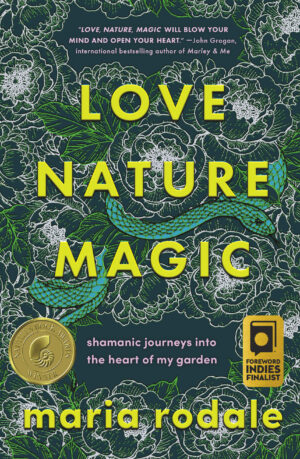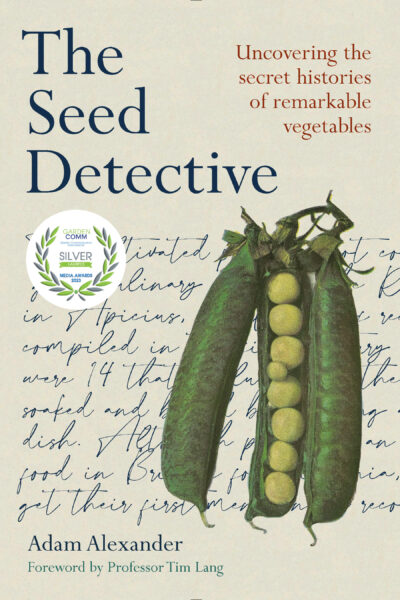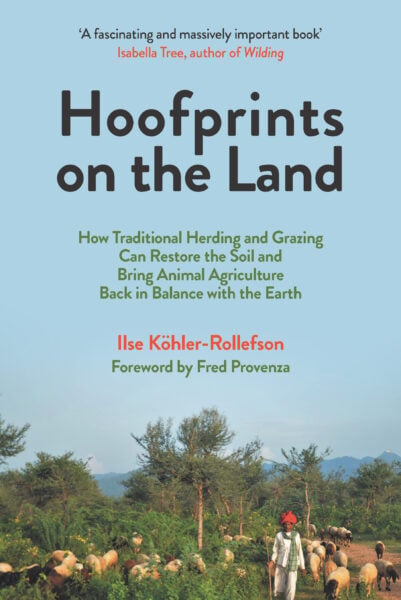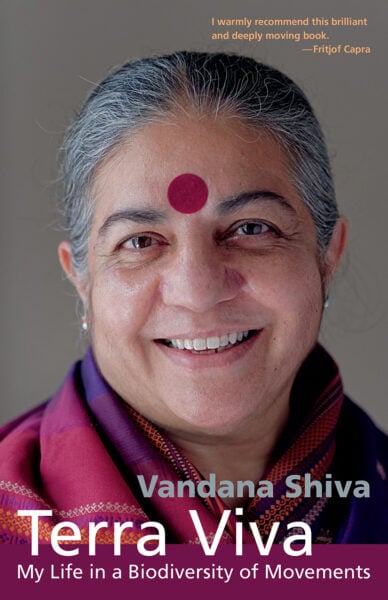Magic Within Every Garden: Sharing the Love
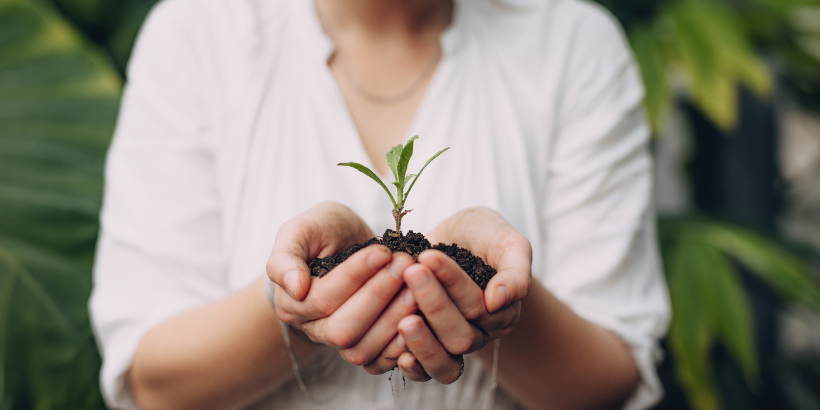
When we garden, we establish a close relationship with every element: the plants, the soil, and even the creatures that interact with them. And while some elements of this activity are less-than-glamourous, the collaboration cultivated between the garden and gardener is one of pure beauty. In the excerpt below, author Maria Rodale discusses how simply changing the way think about gardening can open up a new, magical world.
The following is an excerpt from Love, Nature, Magic by Maria Rodale. It has been adapted for the web.
The Joy of Gardening: A Creative Collaboration
Dear Reader,
I found Love, Nature, Magic in my garden. While weeding, actually. I was trying to eradicate a plant called mugwort, a seemingly pesky plant that plays a starring role in this book. Little did I know what a strange path mugwort would lead me on once I decided to try to listen to it.
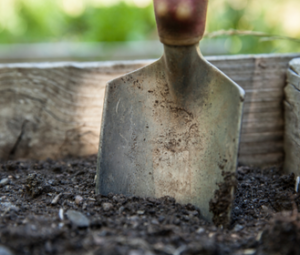 Gardening (or farming, for that matter) is not for the faint of heart. In my garden I come face-to-face with birth, death, decay, murder (!) and mayhem, invasions, weeds armed with poisons and sharp weapons. After a good day in the garden, I am dirty, sweaty, scratched, and bitten and only briefly satisfied because I know that this is a relationship that will not end until I end, buried in the ground to be eaten by the decomposers and fed to the roots of trees that will outlive all of us. And notice I did not even mention the weather. Or the ticks. Or the rabbits and woodchucks.
Gardening (or farming, for that matter) is not for the faint of heart. In my garden I come face-to-face with birth, death, decay, murder (!) and mayhem, invasions, weeds armed with poisons and sharp weapons. After a good day in the garden, I am dirty, sweaty, scratched, and bitten and only briefly satisfied because I know that this is a relationship that will not end until I end, buried in the ground to be eaten by the decomposers and fed to the roots of trees that will outlive all of us. And notice I did not even mention the weather. Or the ticks. Or the rabbits and woodchucks.
Growing plants for food, beauty, and pleasure is a creative collaboration with the greatest artist of all—nature. It took me decades to learn that I am not the one in control, and the more I relax and pay attention to what everything in my garden wants, the happier we all are. It’s not a war, it’s a dance. It’s not a competition, it’s a partnership. It’s not a race, it’s a festival. It’s not easy, but it’s the kind of hard that builds strong muscles and creates something new and wonderful. And isn’t that what we want to do in this world? Create something new and wonderful, encouraging everyone to live to their full potential and enjoy this strange experience we call life? With a garden, we can create the world we want to see and live in. That, my friends, is magic.
Exploring the Magic: Shamanic Journeying
One day, afer a particularly frustrating bout in the garden trying to “control” an “invasion” of mugwort, I decided to see if I could do a shamanic journey to understand what, if anything, this plant was trying to communicate to me. (A shamanic journey is a drug-free way of going inward to seek understanding of the outer world by speaking directly with spirit in other realities. I’ll explain more about journeying in a moment or two.) That experience was transformative. Fascinating. Illuminating. It made me want to journey to com- municate with all the other beings in my yard that annoyed me, and that I needed or wanted to understand better.
The idea for this book came from that experience. What if, I thought, I combine my experience as a gardener, where my roots have spread and deepened and connected me to Earth, with what I have learned as a journeyer, where I have soared to other worlds? One of the things we learn when we journey is that the best way to honor the spirits who guide us is to listen and show that we heard their message. Writing a book felt like the best way I could honor them.
It was exciting to think about writing that book, but terrifying to imagine sharing it with the world. This was not the kind of thing I felt comfortable talking about with people. Except my kids, and yes, they think I’m weird. But I’m getting too old to worry about what other people think of me. The path started opening before me, and I couldn’t help but follow to see where it led. The more I started talking with people about shamanic journeys, the more they shared with me about their own similar experiences and deep curiosity. It wasn’t that scary after all.
Getting to Our Roots & Learning to Love
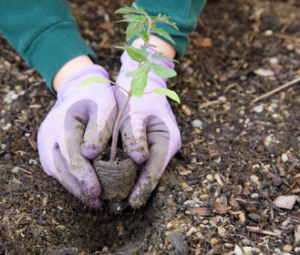 We all started in a garden. Whether you believe in the biblical Garden of Eden or the theory of evolution (or both), our roots are in nature, in learning about the world around us through the plants and animals that sustain us, the rocks and trees that shelter us, and the waters that quench our bodies and souls. If we can overcome our fears and learn to see nature as a friend and ally, what is then possible? If we can transform our annoyance with plants, animals, and insects we regard as pests into love and appreciation for them, how might our whole world change? Could we transform this dystopian mental death spiral that has trapped so many people, changing it into a cycle of upward evolution and cooperation? Perhaps it’s possible to course-correct our seeming environmental human plane crash by learning to love those things that frighten and annoy us.
We all started in a garden. Whether you believe in the biblical Garden of Eden or the theory of evolution (or both), our roots are in nature, in learning about the world around us through the plants and animals that sustain us, the rocks and trees that shelter us, and the waters that quench our bodies and souls. If we can overcome our fears and learn to see nature as a friend and ally, what is then possible? If we can transform our annoyance with plants, animals, and insects we regard as pests into love and appreciation for them, how might our whole world change? Could we transform this dystopian mental death spiral that has trapped so many people, changing it into a cycle of upward evolution and cooperation? Perhaps it’s possible to course-correct our seeming environmental human plane crash by learning to love those things that frighten and annoy us.
We humans often seem trapped in a series of arguments that it feels like no one will ever win. Logic and facts don’t seem to matter. We lose trust in each other and in the systems that were created to seemingly sustain us. I decided to journey because I needed to know if there was another way. I was looking for answers to satisfy my own longing to know, to understand, and to find hope.
Through shamanic journeying, I found those things and more.
I now believe it’s possible to create a new Eden where knowledge is not a sin, desire is recognized as part of our human purpose, and love and understanding are the original blessing to be nourished and cultivated in the garden of our lives. I also believe we can create a place where diversity is celebrated and embraced as a beautiful gift from nature, because nature thrives on diversity.
It’s easy to love the obviously delightful parts of nature, the plants and birds and other creatures that have become our friends and delight us with their beauty—the roses, the tomatoes, the lilies of the field, the butterflies, the hummingbirds. Just like it’s easier to love our own families or people who look like us. But what about those beings that are harder to love? The ones we try to exterminate or eradicate? The weeds, the pests, the invasives? They may have important things to teach us. What are we capable of learning from them if we really listen? I realized that I stood to learn the most from the plants and animals that frustrated and frightened me. And they were eager to help teach me.
This is where my adventure begins and what these stories explore.
Recommended Reads
Recent Articles
Everyone loves a refreshing, fermented, nutritious drink…even your garden! Take your fermentation skills out of the kitchen and into the garden by brewing fermented plant juice. The following is an excerpt from The Regenerative Grower’s Guide to Garden Amendments by Nigel Palmer. It has been adapted for the web. How to Make Fermented Plant Juice Fermented…
Read MorePeregrine falcons, while known as predators, are essential to our environment. These stunning birds have a rich history, an interesting present, and an uncertain future. The following is an excerpt from Feather Trails by Sophie A. H. Osborn. It has been adapted for the web. Who Are Peregrine Falcons? Though relatively uncommon wherever it occurs,…
Read MoreWant to see your crops thrive this upcoming growing season? The key is in soil fertility and health. Spend time maintaining your soil’s health to guarantee bigger and better crops come harvest time! The following is an excerpt from No-Till Intensive Vegetable Culture by Bryan O’Hara. It has been adapted for the web. What Is Soil Fertility?…
Read MoreIt’s time to take control of your seeds and become a plant breeder! Saving your seed allows you to grow and best traditional & regional varieties, and develop more of your own. The following excerpt is from Breed Your Own Vegetable Varieties by Carol Deppe. It has been adapted for the web. Becoming A Plant…
Read MoreWondering where to forage for greens this spring? Look no further than hedges, which serve as natural havens for wild greens and herbs! The following is an excerpt from Hedgelands by Christopher Hart. It has been adapted for the web. Food from Hedges: Salads and Greens Let’s start by looking at all the wild foods…
Read More

